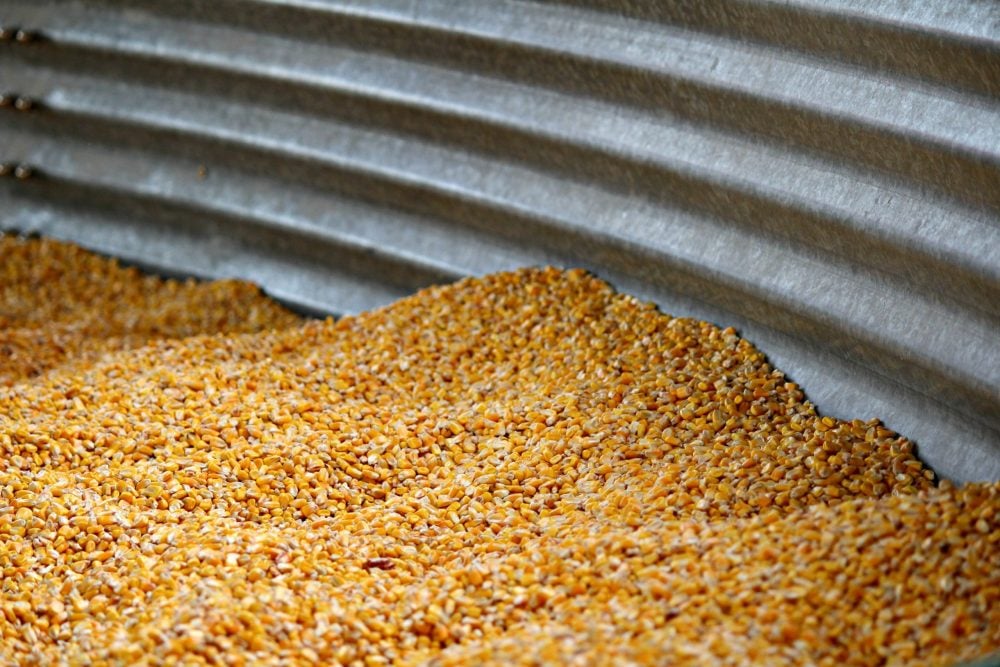U.S. corn futures climbed to a seven-week high on Wednesday and soybeans touched a six-week high as concerns increased that dry weather will cut production in major exporter Argentina.
Worries about dryness, coupled with technical and fund buying, overshadowed weakening demand for corn used to make ethanol, traders said.
U.S. ethanol production slumped to its lowest level since the government started collecting data more than two years ago, according to the U.S. Energy Information Administration (EIA).
"The dry growing conditions are attracting a lot of attention," said Tomm Pfitzenmaier, analyst for Summit Commodity Brokerage. "There is little rain forecasted there for the next two weeks and they have already gone four weeks without rainfall."
Read Also

Feed Grain Weekly: Demand, activity slowly rising
While demand and activity is slowly ramping up for the fall cattle run, feed grain prices are currently in decline, said a Lethbridge, Alta.-based trader.
Chicago Board of Trade (CBOT) March soybeans ended up 1.9 per cent at $14.78-3/4 a bushel, while March corn jumped 1.5 per cent to $7.40-1/4 a bushel. March wheat rose 1.3 per cent to $7.87 a bushel (all figures US$).
The global corn and soybean markets are counting on massive South American harvests early this year to relieve tight world supplies after a drought in the United States in 2012.
Argentina, the world’s No. 2 exporter of corn after the United States and third largest supplier of soybeans, is expected to harvest a record-large corn crop and a big soy crop, according to the U.S. Department of Agriculture.
But crop forecasts depend on February being wetter than January.
Crop forecaster Lanworth on Wednesday lowered its forecast for corn and soybean production in Argentina due to recent dryness.
On Tuesday, German analysts Oil World warned that delays or weather damage to harvests in Argentina and Brazil could push soybean futures up sharply in coming weeks.
"The biggest thing is the uncertainty of the South American weather," said Dax Wedemeyer, broker for U.S. Commodities. He said forecasts show "that things might be trending just a slight bit drier in some areas" than previously expected.
China demands
Strong demand from China, the top soybean importer, is keeping pressure on global supplies of the oilseed.
Private exporters struck deals to sell 175,000 tonnes of U.S. soybeans to China for delivery in the next marketing year, the U.S. Department of Agriculture said Wednesday.
It was the second sale this week to China that called for delivery during the 2013-14 marketing year, which opens on Sept 1. On Monday, exporters reported the sale of 220,000 tonnes of U.S. soybeans to China for 2013-14 delivery.
The soybean harvest in Brazil, which is poised to surpass the United States as the world’s top exporter this year, may not be as large as expected due to heavy rainfall during the past two weeks and drought in the northeast, according to El Tejar Ltd., the world’s largest grain producer.
The farm giant’s commercial director for Brazil, Ivan Konig, said in an interview that he expects a harvest of 80 million to 81 million tonnes, undercutting the Brazilian government’s official view of 82.7 million tonnes.
The USDA has pegged Brazil’s harvest at 82.5 million tonnes.
Ethanol slump
Persistent dryness across the U.S. Plains and weakness in the U.S. dollar helped support wheat futures.
Conditions for the winter wheat crop worsened in January as the drought in the central U.S. showed no signs of ending, according to reports by the USDA’s National Agricultural Statistics Service.
For corn, U.S. ethanol production has sagged as poor demand and high costs have prompted a series of plant closings.
Ethanol output fell to 770,000 barrels per day in the week ended Jan. 25, down 22,000 barrels from the previous week, the EIA said. That compares to output of 939,000 barrels per day a year
ago and 908,000 barrels two years ago.
— Tom Polansek covers agriculture and the CBOT for Reuters from Chicago. Additional reporting for Reuters by Michael Hogan in Hamburg and Naveen Thukral in Singapore.














